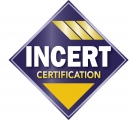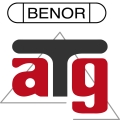
EN 54-13: Clarifying Some Misconceptions
The NBN S 21-100-1 standard requires evidence of compatibility for all components used in an automatic fire detection system. The simplest way to prove that a system complies with this standard is to have an EN 54-13 compatibility certificate.
Essential components required by the NBN S 21-100-1 standard (*1) must be of type I according to EN 54-13 (*2). Equipment classified as type I on the certificate is equipment whose functions within the system have been verified during system certification. This component must meet the requirements of its product standard (EN 54 series) (*3).
This primarily involves environmental tests such as resistance to humid heat, salt spray, vibration, shock, or electromagnetic compatibility (EMC), as well as performance tests (fire chamber, thermal tunnel, etc.) and functional tests.
Type I components not covered by a product standard must meet the requirements of standards EN 50130-4 and EN 50130-5. ANPI conducts these tests according to dedicated test standards and under accreditation in its laboratories.
Optional components, on the other hand, are classified as type II equipment according to EN 54-13. Equipment classified as type II on the certificate is equipment whose functions within the system have NOT been verified during system certification. For this equipment, it has only been verified that their connectivity is compatible and that they do not prevent the correct operation of type I equipment in the system. This could mean that these components do not function correctly for the intended use (a printer that only prints in Mandarin characters or one character in three), but at least it can be ensured that it cannot in any way cause disturbances to the detection system. Caution: among these type II components, we also find the GTC (centralized technical management), the GTB (building technical management), the BMS (Building management System) which are centralized technical management systems that have no dedicated standard, no laboratory test requirements, no performance rules to respect, and which are not verified by any third-party laboratory. When a requirement is found in the installation standard NBN S 21-100-1 or in a royal decree (Annex 6 of the Royal Decree of July 7, 1994 laying down the basic standards for fire and explosion prevention to which buildings must comply, commonly called "Basic Standards", which requires an alarm report in a "central control and command post"), a GTC, a GTB, a BMS alone are not sufficient, a control and signaling equipment (ECS) certified EN 54-2 or a type I repeater panel verified according to the relevant points of EN 54-2 is a prerequisite.
Another specificity that needs to be clarified is the possibility of using in the same installation components that are part of different certificates, but concerning an identical ECS for wired systems or an identical communication base (gateway) for wireless systems. Since the EN 54-13 standard deals with the links between the central unit and its components, there is no reason, as long as all the prerequisites (currents, protocols, etc.) are met, not to allow this approach.
Furthermore, it should be noted that there is a fundamental difference between the EN 54-13:2005 standard and the EN 54-13:2017 standard, which concerns the requirement to take into account partial failure. EN 54-13:2005 certificates expire on 23/10/2024 and the application of EN 54-13:2017 requires compliance with the requirements of ANPI Technical Notice NTN 179-L:2021 which addresses the shortcomings of the EN 54-13:2017 version which will be implemented in the new European standard EN 54-2. But the deadlock regarding the pass/fail criteria of annex ZA is still unresolved and is blocking the release of European standards, including EN 54-2.
Therefore, be wary of certificates of foreign origin which may prove to be of a lower level of requirement compared to that of the BOSEC brand.
Finally, as far as field inspections are concerned, it is not always easy to know what are the requirements for the application or non-application of the EN 54-13 standard which was implemented for the first time in addendum 3 of 2008 of the NBN S 21-100:1986 standard. Similarly, for the automatic fire detection part used in an automatic extinguishing installation, or in the case of replacement of components that are no longer available from the manufacturer, the answers to all these questions can be found in the ANPI Technical Notice NTN 164-I which is currently being revised and which you will be able to discover from the start of the 2024 school year.
[*1] NBN S 21-100-1:2021 - Fire detection and alarm systems - Part 1: Rules for risk analysis and needs assessment, design, placement, commissioning, control, use, verification and maintenance
[*2] NBN EN 54-13:2017 - Fire detection systems - Part 13: Evaluation of the compatibility and suitability for connection of system components
[*3] For more information on this subject, see our article in Fire & Security Alert Magazine No. 32, September 2023, pp. 52-53
Picture: Destina / Adobe Stock






